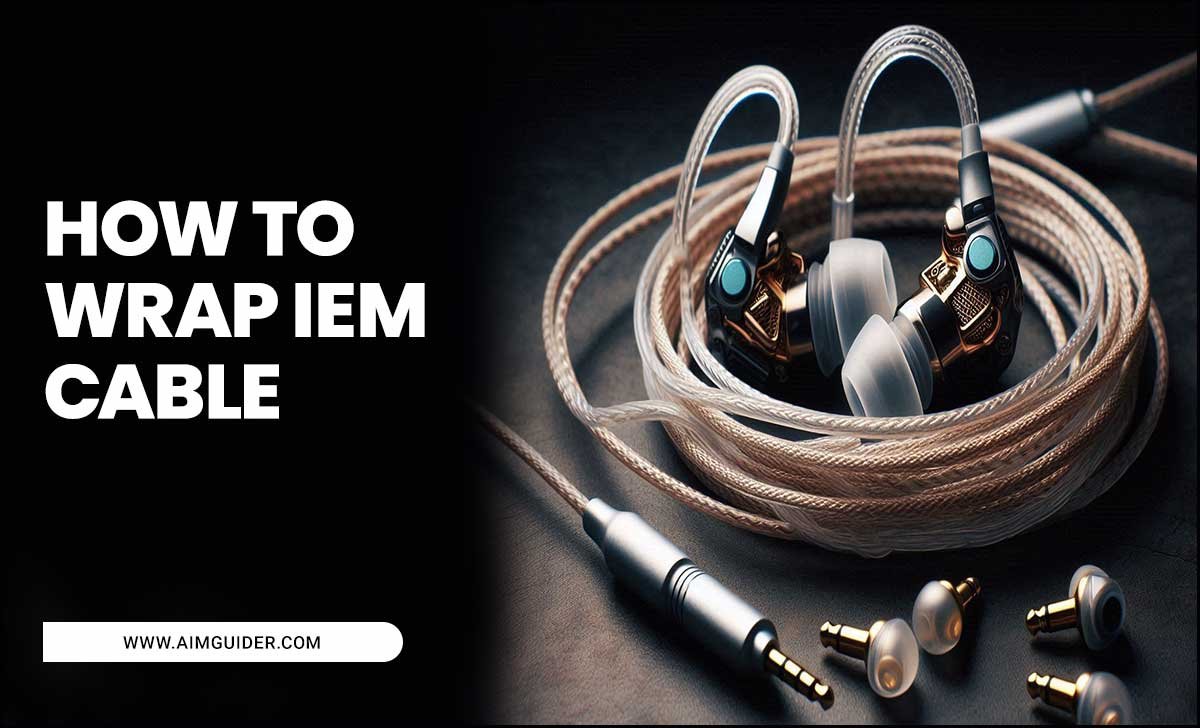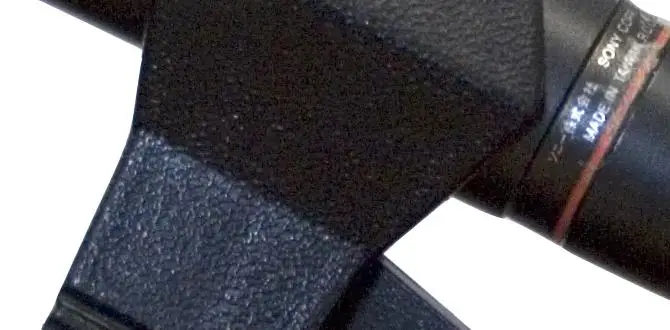LG C3 vs Samsung S90C UHD: The Essential Comparison for Smart TV Buyers
Choosing between the LG C3 and Samsung S90C OLED TVs can be tough, but you don’t need to be a tech expert to pick the right one. Both offer fantastic picture quality, but subtle differences make one a better fit for you. This guide breaks down what matters most, making your decision easy. Get ready to find your perfect UHD TV!
Many of us dream of a stunning TV for movie nights or gaming marathons. But when you’re faced with terms like OLED, QD-OLED, and brightness levels, it can feel overwhelming. You want the best picture, but you also want value and ease. This guide is here to help! We’ll cut through the jargon and compare the LG C3 and Samsung S90C head-to-head. You’ll understand exactly what makes each TV tick, so you can confidently buy the one that suits your needs best. Let’s dive in and find your perfect screen!
LG C3 vs Samsung S90C UHD: A Beginner’s Guide
Picking a new TV is exciting, but with so many options, it’s easy to get lost. The LG C3 and Samsung S90C are two of the most talked-about TVs right now, and for good reason. They both promise amazing picture quality that will make your favorite shows and movies look incredibly lifelike. But what’s the real difference between them, and which one should you bring home?
Don’t worry, we’re here to make it simple. We’ll break down everything you need to know, from the picture technology they use to how easy they are to use. By the end, you’ll have a clear picture of which TV is the champ for your living room.
Understanding the Core Technologies: OLED vs. QD-OLED
The biggest difference between the LG C3 and Samsung S90C comes down to their display technology. This might sound complex, but understanding the basics will explain why they look different.
What is OLED? (LG C3)
LG’s C3 uses advanced OLED (Organic Light-Emitting Diode) technology. Think of each pixel as a tiny, individual light bulb that can turn on, off, or change color all by itself.
Perfect Blacks: Because each pixel can turn completely off, you get true black. This means colors pop and details in dark scenes are crystal clear.
Incredible Contrast: The difference between the brightest white and the darkest black is huge, making images feel incredibly deep and realistic.
Wide Viewing Angles: The picture looks great no matter where you sit in the room.
The LG C3 takes this excellent OLED foundation and adds LG’s latest processing power to make the image even better.
What is QD-OLED? (Samsung S90C)
Samsung’s S90C uses a newer technology called QD-OLED. It’s a bit of a hybrid, combining the best of OLED with Quantum Dots, which Samsung uses in its other premium TVs.
OLED’s Benefits: Like the C3, the S90C benefits from perfect blacks and amazing contrast.
Brighter Colors: The Quantum Dots help boost the color performance, making them even more vibrant and pure, especially at high brightness levels.
Wider Color Gamut: QD-OLED can display a broader range of colors, which can make certain content look more dynamic and lifelike, especially HDR (High Dynamic Range) content.
To put it simply, OLED is the foundation for both. The S90C adds Quantum Dots to enhance the color and brightness beyond what traditional OLED can achieve.
Key Features Compared: Picture Quality, Brightness, and Color
When you’re looking at a TV, what matters most is how good the picture looks. Let’s see how the C3 and S90C stack up.
Picture Quality: Who Wins?
Both TVs offer superb picture quality, but they have slightly different strengths.
LG C3: Excels with its perfect blacks and natural color reproduction. Images are sharp, detailed, and incredibly smooth, especially with moving objects thanks to its excellent motion handling. It’s a master of consistency.
Samsung S90C: Offers a more vibrant and punchy picture. The QD-OLED technology allows for more saturated colors and a wider color spectrum, which can make HDR content look truly stunning. The added “pop” is noticeable.
For most viewers, the difference in picture quality comes down to personal preference. Do you prefer a more natural, refined look (C3) or a more intensely colorful, vivid image (S90C)?
Brightness: Can You See the Difference?
Brightness is crucial, especially in well-lit rooms. Higher brightness means more impactful HDR and less glare.
LG C3: The C3 is brighter than previous LG OLEDs but is generally considered less bright than the S90C, especially in its peak highlights for HDR. However, its brightness is very consistent across the screen.
Samsung S90C: The QD-OLED technology in the S90C allows it to achieve higher peak brightness levels and more consistent brightness across larger areas of the screen compared to the C3. This makes HDR content really shine and helps combat reflections in bright rooms.
If you watch a lot of TV in a bright environment or are a big fan of the intense wow-factor of HDR, the S90C has a slight edge here.
Color Performance: Vibrancy and Accuracy
Color is what makes a picture pop off the screen. Both TVs are excellent, but their approaches differ.
LG C3: Praised for its accurate and natural color. Colors look true to life, avoiding oversaturation. Its processing ensures colors remain consistent even when the screen is mostly white.
Samsung S90C: Its Quantum Dot layer enables wider color volume and greater saturation. This means colors can be more intense and vibrant, especially reds and greens, providing a more dazzling display for modern content.
The S90C’s colors are often described as more “lively” or “exotic,” while the C3’s are more “real” and “balanced.”
Gaming Features: A Duel for Dominance
For gamers, refresh rates, input lag, and features like VRR (Variable Refresh Rate) are just as important as picture quality. Luckily, both of these TVs are gaming powerhouses.
Refresh Rate and Response Time
LG C3: Features a native 120Hz refresh rate and incredibly fast pixel response times, virtually eliminating motion blur.
Samsung S90C: Also boasts a 120Hz refresh rate and similarly lightning-fast response times, making gameplay feel smooth and incredibly responsive.
HDMI 2.1 Ports
Both TVs offer multiple HDMI 2.1 ports, which are essential for next-gen gaming consoles like the PlayStation 5 and Xbox Series X. These ports support:
4K resolution at 120Hz for super-smooth gameplay.
VRR (Variable Refresh Rate) to prevent screen tearing and stuttering, syncing the TV’s refresh rate with your game’s frame rate.
ALLM (Auto Low Latency Mode) to automatically switch the TV to its game mode for the lowest possible input lag.
Gaming Ecosystems
LG C3: Supports NVIDIA G-Sync Compatible, AMD FreeSync Premium, and has LG’s own Game Optimizer menu, allowing for fine-tuning of game settings.
Samsung S90C: Supports AMD FreeSync Premium Pro and also features its own Game Bar, giving players quick access to essential gaming information and settings.
In terms of pure gaming performance, both are phenomenal. The S90C might have a slight edge if you’re looking for the absolute brightest and most vibrant gaming visuals, while the C3 is an all-around champion renowned for its flawless motion handling.
Smart TV Platforms: WebOS vs. Tizen
The smart TV platform is what you interact with daily to launch apps and navigate menus. Both LG and Samsung have well-developed systems.
LG’s WebOS
LG’s WebOS is known for its user-friendly interface.
Layout: It typically features a bar at the bottom of the screen for quick access to apps and settings, which can be customized.
App Support: Offers a comprehensive range of popular streaming apps like Netflix, Disney+, Amazon Prime Video, Hulu, and more.
Ease of Use: Many find WebOS intuitive and easy to navigate, making it a great choice for less tech-savvy users.
Magic Remote: LG’s Magic Remote, with its pointer feature, adds a unique and efficient way to navigate.
Samsung’s Tizen OS
Samsung’s Tizen OS is also a strong contender.
Layout: Tizen often presents a full-screen interface with a focus on content discovery and a streamlined app row.
App Support: Equally robust in app availability, covering all major streaming services.
Performance: Generally fast and responsive, Tizen offers a smooth user experience.
SmartThings Integration: If you have other Samsung smart home devices, Tizen’s SmartThings integration can be a big plus.
Both platforms are excellent and offer easy access to all the content you want. The choice often comes down to which interface style you prefer. Some find WebOS more organized, while others prefer Tizen’s content-forward approach.
Design and Build Quality
These TVs are designed to look good in your home.
LG C3 Design
Aesthetic: The C3 features a very sleek and minimalist design. It has slim bezels and a relatively thin profile, especially for an OLED.
Stand: Comes with a stylish center-stand that is usually quite stable. Some models might have a different stand design.
Build: Feels premium and well-constructed.
Samsung S90C Design
Aesthetic: The S90C also boasts an incredibly slim and elegant design. Its “One Slim design” ensures a clean look from any angle.
Stand: Often features a modern, sometimes floor-standing type of center stand that adds to its premium feel.
Build: Feels solid and high-quality, fitting into a modern living space seamlessly.
Both TVs are beautiful. The S90C might have a slight edge in terms of overall thinness and a sometimes more striking stand design, making it appear even more like a piece of art on your wall or stand.
Sound Quality: What to Expect
While both TVs have built-in speakers, they are typically designed for casual viewing. For a truly cinematic experience, a soundbar or surround sound system is recommended.
LG C3: Offers decent built-in audio, often with AI Sound Pro to optimize sound based on content. It’s perfectly adequate for everyday TV watching.
Samsung S90C: Also provides good integrated sound, with features like Object Tracking Sound Lite to give a sense of directional audio. It’s comparable to the C3 for built-in sound.
For the best audio experience with either TV, consider pairing it with a dedicated sound system. Check out guides on how to choose a soundbar for more insights.
Price and Value Proposition
Price is a major factor for most shoppers.
LG C3: Typically positioned as a slightly more affordable option compared to Samsung’s QD-OLED models, offering excellent value for a premium OLED experience. Prices can vary based on screen size and sales.
Samsung S90C: Often priced at a premium due to its QD-OLED technology and higher brightness capabilities. It represents cutting-edge display tech, which comes at a higher cost.
The “value” depends on your priorities. If you want the absolute best picture performance and can afford it, the S90C might justify its higher price. If you’re looking for a fantastic OLED experience that’s more budget-friendly, the C3 is an incredible choice and often sees significant discounts.
LG C3 vs Samsung S90C UHD: Key Differences at a Glance
To make things super clear, here’s a table summarizing the main differences:
| Feature | LG C3 (OLED) | Samsung S90C (QD-OLED) |
|---|---|---|
| Display Technology | OLED | QD-OLED |
| Peak Brightness | Very Good (consistent) | Excellent (higher peaks, especially for HDR) |
| Color Vibrancy | Natural and Accurate | More Vibrant and Saturated |
| Black Levels | Perfect | Perfect |
| Gaming Features | 4x HDMI 2.1, VRR, ALLM, G-Sync Compatible, FreeSync Premium | 4x HDMI 2.1, VRR, ALLM, FreeSync Premium Pro |
| Smart TV OS | WebOS | Tizen OS |
| Design | Sleek, thin bezels | Extremely slim, premium aesthetic |
| Price | Generally more affordable | Typically higher premium |
Who Should Buy the LG C3?
The LG C3 is an excellent choice for:
Budget-Conscious OLED Seekers: You want the incredible benefits of OLED without the absolute top-tier price tag.
Movie Buffs: Appreciates natural color, perfect blacks, and incredible contrast for a cinematic viewing experience.
Gamers: Demands smooth motion, low input lag, and robust gaming features like VRR and G-Sync compatibility.
Bright Room Viewers (with caveats): While not as bright as the S90C, its excellent anti-reflection coatings and good overall brightness make it work well in many lit environments.
Users Preferring WebOS: If you find LG’s Magic Remote and WebOS interface more intuitive, this is your TV.
Who Should Buy the Samsung S90C?
The Samsung S90C is ideal for:
Brightness Enthusiasts: You want the brightest possible HDR experience and a TV that shines even in very sunny rooms.
Color Aficionados: You love vibrant, punchy colors and want the widest possible color spectrum for content.
Next-Gen Gamers: Seeking the absolute best visual fidelity in games, with exceptionally bright HDR gaming.
Design-Forward Homes: Its ultra-slim profile and premium aesthetic make it a statement piece.
* Samsung Ecosystem Users: If you have other Samsung SmartThings devices.
Final Verdict: LG C3 vs. Samsung S90C
Both the LG C3 and the Samsung S90C are absolutely stellar UHD TVs that deliver phenomenal picture quality. You truly can’t go wrong with either.
The LG C3 offers a more refined, natural picture with perfect blacks, excellent motion handling, and a fantastic OLED experience at a more accessible price point. It’s a widely recommended TV for a reason, balancing performance and value beautifully.
The Samsung S90C, with its QD-OLED technology, pushes the boundaries with brighter colors and higher peak brightness, offering a more vibrant and impactful viewing experience, especially for HDR content and gaming. It’s the choice for those who want the absolute cutting edge and a more dynamic picture.
Ultimately, the “better” TV depends on your personal preferences and your viewing environment. Consider where you’ll be watching, what you watch most, and what your budget allows, and you’ll find the perfect high-definition companion for your home. Happy viewing!
Frequently Asked Questions (FAQ)
Is OLED better than QD-OLED?
It’s not that one is strictly “better,” but they offer different strengths. OLED (like the LG C3) provides perfect blacks and natural colors. QD-OLED (like the Samsung S90C) combines OLED’s benefits with Quantum Dots to achieve even brighter colors and higher peak brightness, making HDR content pop more.
Which TV is brighter, the LG C3 or Samsung S90C?
The Samsung S90C is generally brighter, especially in its peak highlights for HDR content. QD-OLED technology allows it to achieve higher brightness levels, which can be beneficial in brightly lit rooms or for making HDR content more impactful.
Which TV is better for gaming, the LG C3 or Samsung S90C?
Both are exceptional for gaming! They both offer 120Hz refresh rates, low input lag, and multiple HDMI 2.1 ports for next-gen consoles. The S90C might offer slightly more vibrant HDR gaming visuals due to its higher brightness, while the C3 is renowned for its incredibly smooth motion. It’s a very close call, and both are top-tier gaming TVs.
Are both TVs good in a bright room?
Both TVs handle bright rooms well for OLEDs. The Samsung S90C has an advantage due to its higher brightness and wider color volume, which helps combat reflections and makes the image stand out more. The LG C3 also has good anti-reflection capabilities, but the S90C generally performs better in very bright conditions.
Which smart TV system is better, LG’s WebOS or Samsung’s Tizen?
<p







